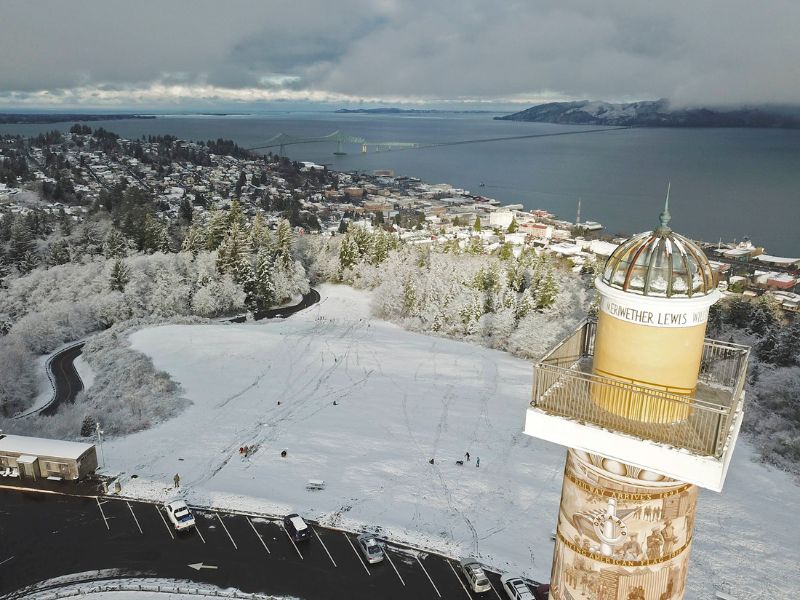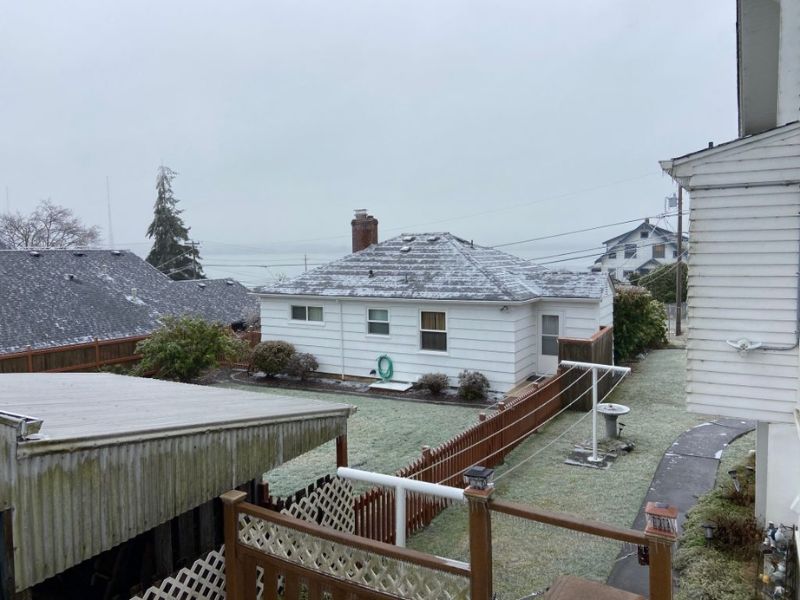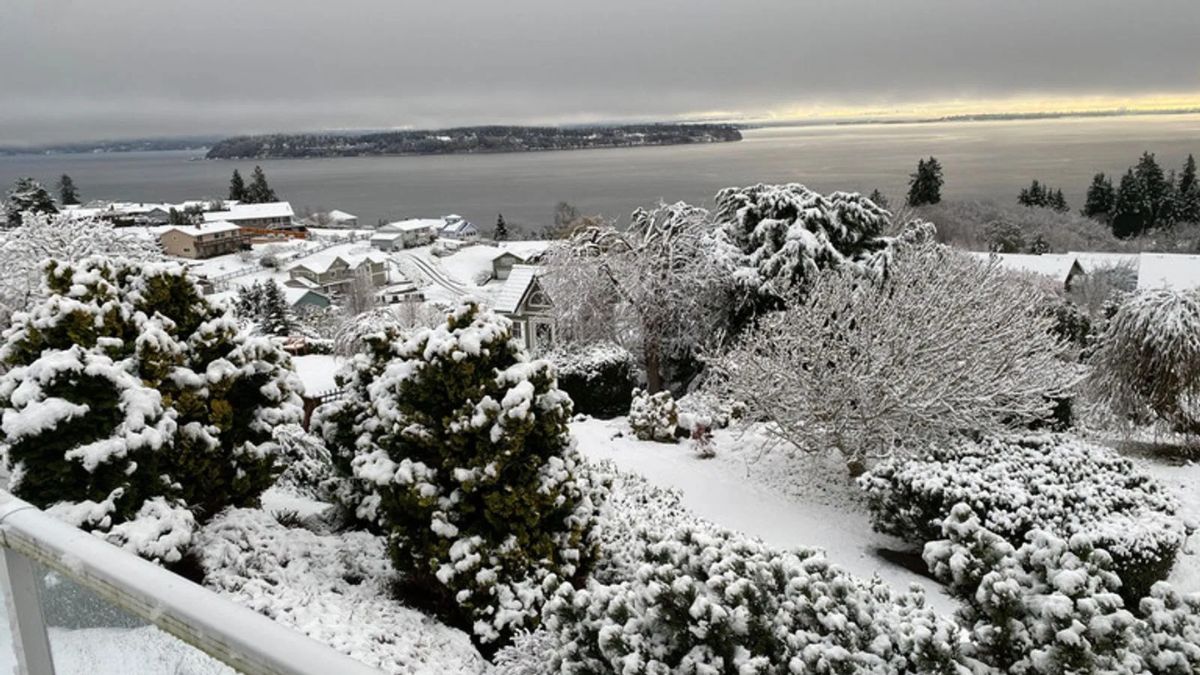Yes, it does snow in Astoria, Oregon, although the city experiences very little snowfall. While the city does see occasional light snowflakes during the winter months, significant snow accumulation is relatively rare. Astoria’s location along the coast and its proximity to the Pacific Ocean contributes to its milder winter temperatures and limited snowfall.
The primary form of precipitation in Astoria during the winter season is rain, which is typical of the Marine West Coast climate that characterizes the region. However, it is worth noting that weather patterns can vary from year to year, and there might be occasional exceptions with slightly more or less snowfall.
Astoria, Oregon, is a charming coastal town located at the mouth of the Columbia River. Known for its picturesque landscapes and historical significance, this city attracts both residents and tourists alike.
However, one question that often comes to mind when considering a visit or moving to Astoria is whether it experiences snowfall. In this article, we will explore the climate of Astoria and answer the question, “Does it snow in Astoria, Oregon?”
Location Overview of Astoria
Astoria, Oregon, is a picturesque city located in the northwest corner of the United States. It sits at the mouth of the Columbia River, where it meets the Pacific Ocean. This unique geographical position gives Astoria its distinct coastal charm and historical significance.
Astoria is situated in Clatsop County, Oregon. It is approximately 10 miles from the Pacific Ocean coast and lies along the southern shore of the Columbia River. The city is surrounded by beautiful landscapes, including lush forests, rolling hills, and the nearby Oregon Coast Range.
The location of Astoria provides access to various natural attractions. The city’s waterfront and nearby beaches offer opportunities for beachcombing, birdwatching, and storm watching. Visitors can explore nearby state parks, including Fort Stevens State Park, with its historic shipwrecks and vast sand dunes.
Due to its location at the confluence of the Columbia River and the Pacific Ocean, Astoria serves as a gateway to the Pacific Northwest region. From here, travelers can explore the Oregon coast, visit nearby towns, or venture further into the Pacific Northwest, discovering the diverse landscapes and attractions of the area.
Astoria, Oregon, is a charming city with a unique and strategic location that shapes its climate, culture, and economic opportunities. Its historic significance, natural beauty, and vibrant community make it an attractive destination for both residents and visitors.
Geography and Climate of Astoria
Before delving into the snowfall patterns of Astoria, it’s essential to understand the city’s location and overall climate. Astoria falls within the Marine West Coast climate zone, also known as the Pacific Maritime climate. This climate type is characterized by mild summers, cool winters, and abundant rainfall throughout the year.
Astoria’s proximity to the Pacific Ocean significantly influences its climate and weather patterns. The ocean’s moderating effect helps to maintain relatively stable temperatures throughout the year.
Astoria’s winter temperatures are generally mild compared to many other regions in the United States. The average low temperatures during the winter months (December, January, and February) range from 35 to 39 Fahreheit. While temperatures can dip below freezing, it is not as common or severe as in inland areas.
Historical Snowfall Record of Astoria
Historically, Astoria has experienced very little snowfall due to its coastal location and the moderating influence of the nearby Pacific Ocean. Snow events in Astoria are infrequent and typically result in light accumulations.

Astoria’s historical snowfall record shows that snow events are sporadic and often occur only a few times each winter season. On average, snowfall amounts are minimal, with most snow events resulting in less than an inch of accumulation, and it’s not uncommon for some winters to see no snow at all.
One notable snow event in Astoria, Oregon, occurred in December 2009. This event was exceptional because it brought a significant amount of snow to the coastal city, which is relatively uncommon in the region.
During this winter storm, Astoria experienced heavy snowfall, and the city was blanketed in several inches of snow. The accumulation was more substantial than the usual light dusting that occurs infrequently. The snowfall created a beautiful winter wonderland throughout the city, with snow-covered streets, rooftops, and landscapes.
The 2009 snowstorm was memorable for Astoria residents and visitors alike, as it transformed the coastal town into a rare snowy paradise. However, as the city is not accustomed to dealing with heavy snowfall, the event also presented some challenges for transportation and infrastructure.
Local authorities and residents had to address issues related to snow removal, traffic disruptions, and safety measures during this unusual weather event. Despite the challenges, many people embraced the unique opportunity to enjoy winter activities typically associated with regions that receive more regular snowfall.
This particular snow event of 2009 remains noteworthy in Astoria’s history and serves as a reminder of the city’s occasional encounter with more substantial snowfall, making it a topic of conversation and cherished memories for those who experienced it.
Winter Season & Snowfall Pattern of Astoria
When it comes to snowfall, Astoria typically sees little to no accumulation. While snowflakes may occasionally fall from the sky during the winter months, it is rare for them to accumulate on the ground for an extended period.
The proximity to the Pacific Ocean plays a significant role in moderating the temperatures and preventing significant snow accumulation. One of the defining features of Astoria’s climate is its high precipitation levels, especially during the winter season.
The city experiences frequent rain showers, and the weather can be quite cloudy and damp. However, this precipitation primarily falls in the form of rain, as the temperatures remain relatively mild throughout the winter.
Locations to Enjoy Snow in Astoria
While Astoria, Oregon, itself does not typically receive significant snowfall, there are several nearby locations where you can enjoy snow activities during the winter season. If you’re in Astoria and looking for a snowy adventure, here are some places you can visit:

- Mount St. Helens National Volcanic Monument
Located northeast of Astoria, Mount St. Helens offers a stunning winter landscape. The area receives ample snowfall, making it an excellent destination for snowshoeing, cross-country skiing, and winter hiking. The Johnston Ridge Observatory provides panoramic views of the mountain and its surrounding snowy terrain.
- Mount Hood
Situated southeast of Astoria, Mount Hood is a popular winter destination for snow enthusiasts. It offers skiing, snowboarding, snowshoeing, and snowmobiling opportunities at ski resorts like Timberline Lodge and Mt. Hood Meadows. The mountain’s scenic beauty is a treat for nature lovers and winter sports enthusiasts alike.
- Seaside and Cannon Beach
These nearby coastal towns occasionally experience light snowfall during winter. While it may not be as snowy as inland locations, a visit to Seaside or Cannon Beach during a winter snow event can be a unique and beautiful experience.
- Oregon Coast Range
The forested Oregon Coast Range, which surrounds Astoria, can receive substantial snowfall during winter. The range offers opportunities for snowshoeing, sledding, and enjoying the winter scenery. State parks like Fort Stevens State Park and Saddle Mountain State Natural Area are good places to explore.
- Astoria Riverwalk
While Astoria may not have significant snow, the Astoria Riverwalk along the Columbia River can be a delightful spot to enjoy a winter stroll. The riverside path and scenic views create a serene atmosphere during the winter months, even without heavy snowfall.
- Winter Festivals and Events
During the winter season, Astoria and neighboring communities may host winter festivals and events celebrating the holiday spirit and the beauty of the season. Check the local event calendars for holiday markets, light displays, and festive gatherings.
Factors Influencing Snowfall in Astoria
Several factors influence snowfall in Astoria, Oregon. The city’s coastal location and proximity to the Pacific Ocean play a significant role in shaping its winter weather. The moderating effect of the ocean helps keep temperatures relatively mild, making it less likely for snow to accumulate.
Additionally, the Marine West Coast climate, characterized by mild winters and abundant rainfall, results in more precipitation falling as rain rather than snow. While occasional snow events can occur due to cold air masses and weather patterns, significant snowfall is relatively rare in Astoria.
Conclusion
While Astoria, Oregon, may not be a snowy wonderland during the winter, its mild temperatures and scenic coastal beauty make it an attractive destination year-round. The city’s occasional light snowfall adds a touch of winter charm without causing significant disruptions.
So, whether you are looking to escape harsh winters or seeking unique winter experiences, Astoria has much to offer.
